In case the proverbial brown stuff hits the fan, you basically have two choices to survive.
You either stay put and try to outlive the event and its aftermaths, or you pack your stuff and take on the road towards a better future. If you are part of the second category, you probably already have a bug out plan ready to be put in motion and an equipped bug out vehicle to help you reach your destination.
Now, when it comes to bug out vehicles, picking the right option may not seem as easy as it looks. In fact, just because you have an SUV, that doesn’t make it the best bug out vehicle for your family.
There is a big debate in our community about what bug out vehicles we should choose, and everyone thinks their choice is the ideal one. I’m trying to have an impartial opinion when it comes to these types of debates since I know that every prepping plan is designed based on various factors (including personal ones). That being said, I honestly believe that we should first look at the pros and cons of various bug out vehicles before we settle on a certain type.
Also, before we start looking at each option, I would like to address the “bugging in no matter what” scenario. As preppers, we should understand that we can’t predict or control the outcome of a disaster no matter how hard we try. The best we can do is to mitigate the risks and get out of dodge when the situation requires it.
You could make all the necessary arrangements to hunker down and outlive others, but you also have to consider the option of bugging out. The sudden development of a natural disaster could force you to leave everything behind, and that means you should have the means to do so, without putting your loved ones at risk.
Now let’s look at the most popular options we have for bug out vehicles and acknowledge their strengths and weaknesses.
Pros and Cons of your BOV of choice
1. The SUV
Almost every American family has a sport utility vehicle, and it actually makes a good choice for a survival vehicle. There are various types of SUV available on the market, including hybrid ones. You will get a good range with a full tank of gas, and if it’s a hybrid one, you will get even more miles for your buck.
Not to mention that a good SUV is designed nowadays with off-road capabilities, and you will be able to cross any type of terrain you encounter on your way to safety. Add up a set of all-terrain tires with moderate drag (designed for low fuel consumption), and you should be set. If you top it with a roof rack, you will also increase the storage capacity, and you could even carry an alternative mean of transportation (bike, boat, etc.)
The pros:
- Good seating capacity (ideal for a family of four and even larger ones)
- An everyday use vehicle that you already own. One that can be turned into a BOV when SHTF
- Great carrying capacity (you can add extra gear or additional gas)
- You’re not exposed to direct attacks
- With a proper setup, it can become a great off-road vehicle
The cons:
- Not very fuel efficient (you will eventually run out of gas)
- Can’t handle extreme terrain or weather without a costly investment
- Hard maneuverability (if any) in case of road blockages or other obstacles
2. The motorcycle
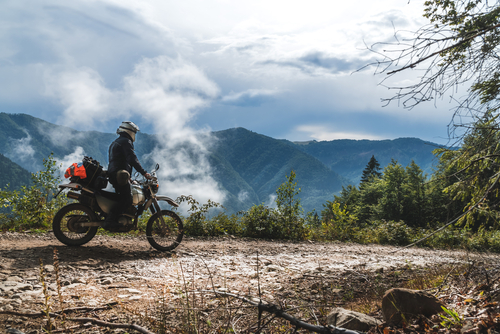
A good motorcycle with a powerful engine can take you anywhere you want, and it can also carry a decent amount of supplies. There are various storage options available for these bikes and people are living with only what their bike can carry. Equip it with two large top cases and reinforced side bags, and you can travel across the country without worries.
The pros:
- Good day to day vehicle with excellent off-road capabilities
- Fuel efficient compared to other vehicles
- A decent amount of storage space (doubles if there’s only one rider)
- Good maneuverability (you won’t get stuck in traffic)
The cons:
- Limited carrying capacity for people (also for supplies)
- You’re exposed to the elements
- You will eventually run out of fuel (no matter how good the mileage is)
- You’re exposed to direct attacks
3. The motorized bike
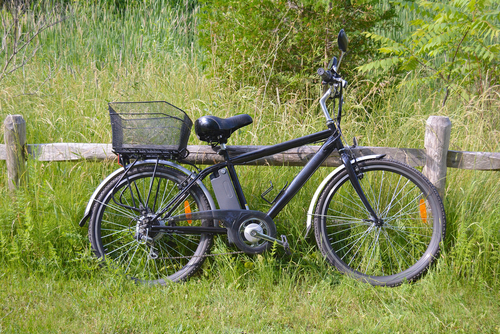
For some preppers, these types of motorbikes have become the ultimate survival bug out vehicle due to their great versatility. With such a BOV, you won’t have to worry about fuel since you can always use the pedal power. It can also be used as an everyday vehicle due to its fuel efficiency and looks (it’s too cool for some to resist it).
Not to mention that these vehicles are designed for all types of terrain and they can cover up to 400 miles with a decent amount of supplies. They can be used both as main BOV or plan B, in case your SUV gets stuck or runs out of gas. Nowadays, there are companies designing these vehicles with survival capabilities in mind (weapon holster, straps, and bags to carry extra supplies and fuel, etc.) for the preppers with disposable income.
The pros:
- The most fuel-efficient BOV on the market
- You can travel further using the pedals when the fuel runs out
- Various mounts, harnesses, and fitments allow you to carry extra supplies
- Can be used in conjunction with an SUV or other vehicles
The cons:
- Designed for one person
- Limited storage capacity compared with a four-wheeler
- You’re exposed to elements (you will feel it on your skin)
- You’re exposed to direct attacks
4. The ATV
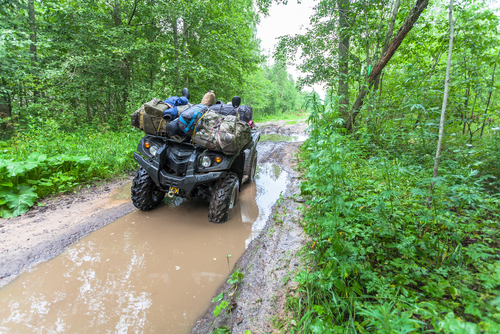
Regardless of what people are using it for, the ATV can become an ideal bug out vehicle due to its powerful engine, aggressive tires and relatively small size. It can traverse all sorts of terrain (regardless of the weather) with decent speed and good carrying capacity. Add a good trailer to it, and you can haul pretty much everything you can think of.
The pros:
- No road can block you, and it will take you anywhere you want to go
- You will overcome almost all type of road traffic and roadblocks
- It can be reinforced to provide body protection
- It’s a cheap alternative compared to an SUV or a Jeep (get a used one to save even more)
The cons:
- Limited range and carrying capacity (unless you have a trailer with additional gas and supplies)
- Just like the motorcycle, you will be exposed to the elements.
- It is limited to only 2 passengers
- You’re also exposed to direct attacks
5. The bicycle
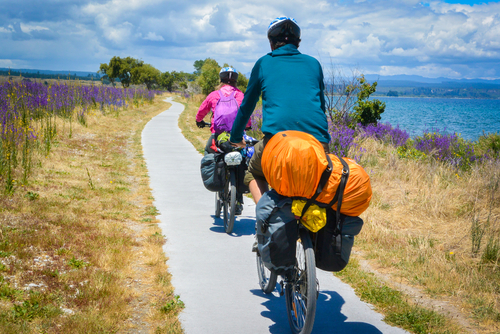
Your bike doesn’t require fuel and it’s no wonder you can’t see any bicycle in survival movies. The smart people have probably put them to good use.
Joking aside, this alternative is considered a great BOV by many survival experts. Its strong built and lightweight, but also the rack system designed to add extra carrying capacity makes it a great choice. Not to mention that it has all-terrain tires designed with self-sealing properties and increased resistance to puncture. Add to the list the fact that there are systems that can generate electricity using the bike, and you will understand why it is a preferred option for many.
Even more, there are bikes equipped with a battery that can take the full load and allow you to rest your legs during long journeys.
The pros:
- Unlimited mileage and there’s no need for fuel
- Can be equipped with a battery for longer journeys (ideal for physically unfit people)
- It can cover all sorts of terrain
- It’s silent compared to other BOVs, and it can help you remain undetected when bugging out
- It’s the best alternative to your main BOV regardless if it’s an SUV or ATV
The cons:
- Designed for one person
- Limited carrying capacity
- You’re exposed to the elements
- You’re exposed to direct attacks
- Limited range if you’re not a fit person
6. The human body
It may be weird to see the human body listed in an article covering BOVs, but if you think about it, this is actually your first option when it comes to bugging out, and it will be your last resort when all your other options will fail you.
No matter how you look at it, your machines will break down, and chances are you will not be able to fix them. However, your body can literally last you until th day you die if you take good care of it.
When it comes to survival, you should always put yourself first, and that includes your body as well. In an emergency situation, you will not care for anything else as much as you care for your body, or at least that’s how logic dictates it. You will have to prepare in advance and know well what your capabilities are in a situation of crisis.
You need to know how much you can carry, what distance you can cover, and for how long. You also have to figure out if you have the proper gear and fuel for it, and overall, if you’re in good shape. After all, humans have relied on their bodies for thousands of years, they can carry an impressive weight for long distances with the proper training.
I was recently looking into the whole madness of people rushing to Mount Everest just to take a stupid photo (it’s insane, I know) and I discovered that they don’t even carry their gear. They carry the bare minimum to survive while the Sherpa are carrying all the heavy loads. Things like tents, furniture, and other luxury items, just to make the stay of the paying “mountain lovers” as comfortable as possible.
Leaving integrity and ethical behaviors aside, these stories show us what the human body is capable of. The fact that the Sherpa can carry heavy loads of up to four times their weight for more than six hours straight is astonishing. This also shows us how unfit most people are and how hard it would be for them to carry basic survival items while traversing unfamiliar terrain.
The pros:
- You can go almost anywhere you want, regardless of the terrain and weather
- Most cost-effective “bug out vehicle.”
- You can cover a decent distance if you have the proper fuel and a good physical condition
- The quietest bug out vehicle if you know what you are doing
- You can overcome any blockades and obstruction compared to other BOVs
The cons:
- Limited carrying capacity compared to mechanical or motorized BOVs
- Limited speed and range (especially for unfit people)
- You are exposed to the elements
- You remain unprotected against direct attacks
- Fuel is still required (food and water)
A small note
There are many other vehicles on the market and all sorts of gadgets (so-called vehicles) that some could consider them as a good bug out vehicle or alternative. However, I cannot see myself using a scooter, kickboard, or kick scooter for my bug out plan. The cons here should be obvious, and I don’t think there’s a point in writing about it. It’s pretty much common sense at this point, and anyone using such alternative means of transportation can’t really be serious about preparedness and survival.
On the other side, there’s the horse. This ancient method of transportation that was used by our ancestors to its full extent, which is still being used and treasured today. Even with this mention, we have to understand that a horse requires special care, and most people don’t know how to ride one. If you know what I’m talking about here, you can probably agree that breaking a horse to undertake certain tasks is rather difficult.
For example, there’s a lot of training that needs to be done before you can fire a gun while riding a horse. You need a gun-broke horse before you fire your gun from the saddle or across the animal and that’s not a common trait for your average horse. Not to mention that most horses are quite skittish and the last thing you need when traversing rough terrain is a nervous or excitable horse. The bottom line is that not all horses can be used as a “bug out vehicle,” and it takes certain people to train horses to undertake long, dangerous journeys.
Concluding
Regardless of what bug out vehicle you choose, my recommendation would be to always have a plan B for it. Make sure it is suited for all your family members (altogether or individually) and it can carry a good amount of supplies. Protection wise, it’s a matter of personal choice and acquired skills.
You can suggest other options or tell us about your choice of heart by using the comment section below. And for the love of God…don’t mention the Segway! Somehow, it keeps finding its way into this debate.
Stay safe and always be prepared!


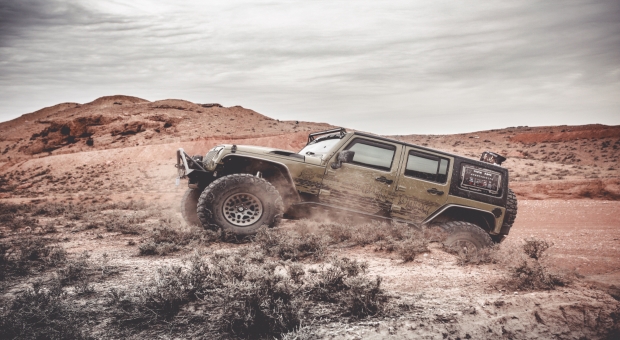


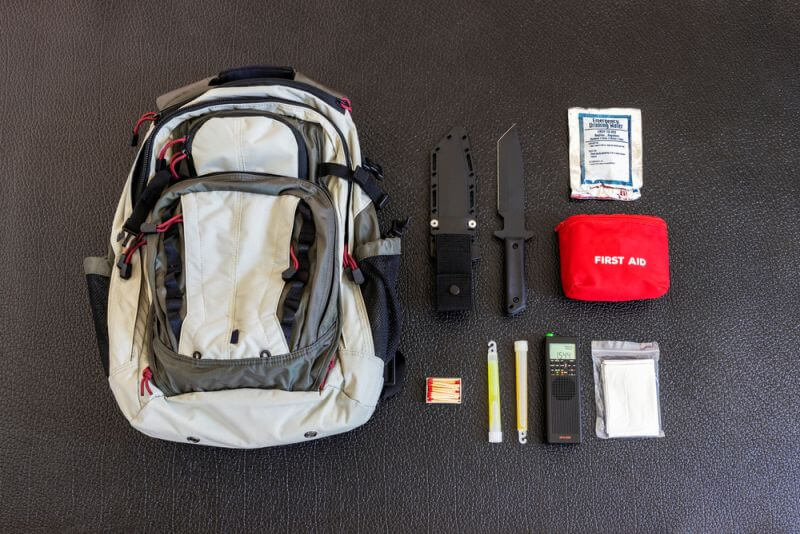

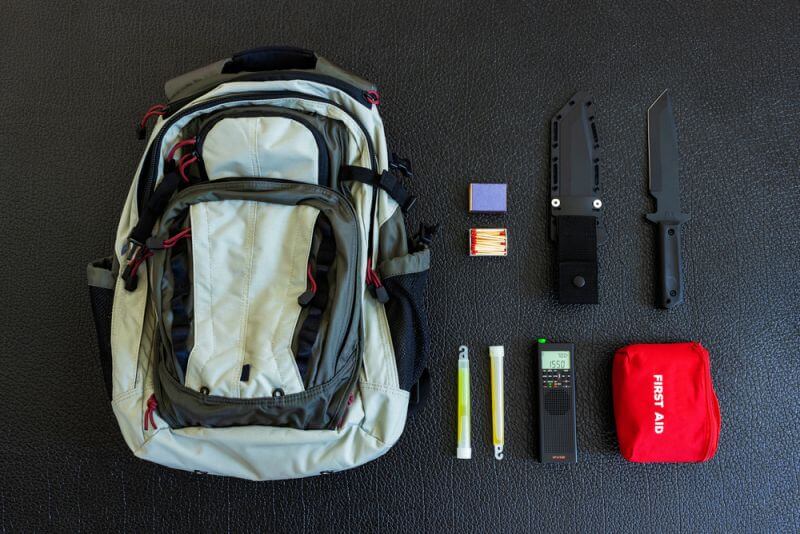
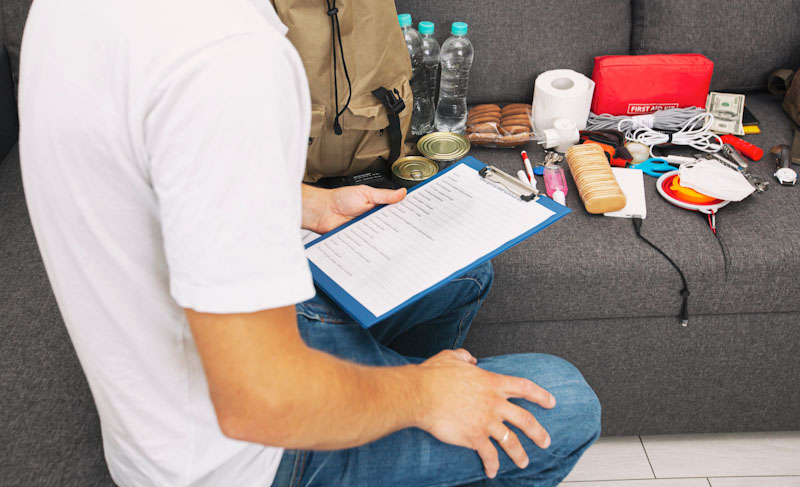

Jerry D Young | July 19, 2019
|
My thoughts on BOVs and PAWVs:
Bug Out Transportation choices run the gamut from Shank’s Mare to the Space Shuttle. If nothing specific is set up beforehand, or it is not available, then anything that is available is the best choice. But, like most things, prior planning and good choices will make things easier and more efficient.
Here is a list of some possibilities. It includes Shanks’ Mare. It does not include the Shuttle. Pretty much everything else I could think of on the spur of the moment. I am sure there are others that can be added to the list. Some are general purpose, some are for specific purposes only. Which one you choose will depend on your circumstances. It may be your only vehicle. It might be your spare or special use vehicle such as a work truck or motorhome. It could be a specially set up vehicle just to use to evacuate.
Whichever it might be, there are several things that you should consider about the vehicle before deciding to depend on it. They include reliability, mobility, utility, range, speed and capacity. If it is not going to work you are better off without it. If it cannot go where you need to go, you do not need it. If it cannot do what you need, you do not need it. If it cannot go far enough…you can start using your alternates choices. If it cannot get you away as fast as you need to get away, choose something else. If it cannot carry what you need, you better start thinking of options.
With that said, and getting the “anything is better than nothing” concept as an accepted fact, we get to some particulars. There are no guarantees. But you need a plan. If your goal is to get to the shelter at the school, hopping in the old jalopy might be more than adequate. And you have always got your two feet, if you have two feet. But many people are going to want to go either someplace specific, or get away from someplace specific. Decide what your plan will be for different evacuation scenarios and plan accordingly.
Set up something that is as reliable as you can make it, that will travel the terrain that you need to travel, with enough of any required fuel to get you where you are going or far enough away from where you are leaving, fast enough to keep you safe, with everyone and everything you really, really need to take with you, as easy to control as possible, and as useful in other ways as possible.
If anyone has questions, I will be glad to give my opinion as best I can.
Bug Out Transport Options
Shanks’ Mare with backpack
The above with snowshoes, cross-country skis, and flotation vest
Both the above with handcart/garden cart/wheeled deer drag/pulka
Kayak/Canoe/Folding boat/Inflatable boat/solo fishing float
Horse/any other large transport animal
Horse cart/wagon
Dog cart/sled
Bicycle
Motorcycle/Dirt bike/Rokon Bike
4-wheeler/ATV/snowmobile/PWC
Small auto
Large auto
Minivan
Full size van
Step van/commercial van
Small SUV
Large SUV
Small 4WD Pickup
Large 4WD Pickup
Service truck
Bob truck/box bed truck/dump truck
Semi Tractor/Trailer
Farm tractor/front end loader/scraper/road grader
Small Motorhome
Large Motorhome
Small boat/Jon boat
Open powerboat
Cabin Cruiser
Houseboat
Small sailboat
Large sailboat
Ultra-light aircraft
Helicopter
Airplane
Specialty vehicle (DUKW, Cadillac-Gage V-150, Hagglund BV-206, swamp buggy/mud racer)
Custom vehicle/Heavily customized vehicle
Various trailers for use with the various vehicles
A Basic BOV
A BOV only, not something intended for use in the PAW, can be pretty simple. It only needs the range and ability to get you where you need to go and have enough carrying capacity to take along the people and supplies that need to go with you.
It can be old and beat up. It can be ugly as sin. Does not need AC, though a heater/defroster is good. Does need decent tires, good brakes, and working lights. Any old car that can make that one trip to get you to safety can be a BOV. Does not need fancy electronics, either entertainment or power train. It just needs to be ready to go when you turn the key. It can sit up on blocks, taken down once a year to blow out the cobwebs and retreat the fuel. When it is needed, push it off the blocks, get in, and go. Does not matter if it does not go one foot further than the driveway of your destination. It got you to safety and that is all that matters. Sure, it can be much more, but it does not have to be.
A PAW vehicle is another thing entirely.
Just my opinion.
Phantom30 | August 18, 2019
|
My first choice is a Cessna Caravan in sky driver configuration, just have to find that $600K pile of loose cash. My second choice is a 4 door 4×4 pickup with cargo trailer, if you are pre-emptive you can move your stuff effectively. If not and the SHTF or worse an EMP then hope you have that converted Montague Paratrooper e-bike in the faraday bag in the back of you vehicle.